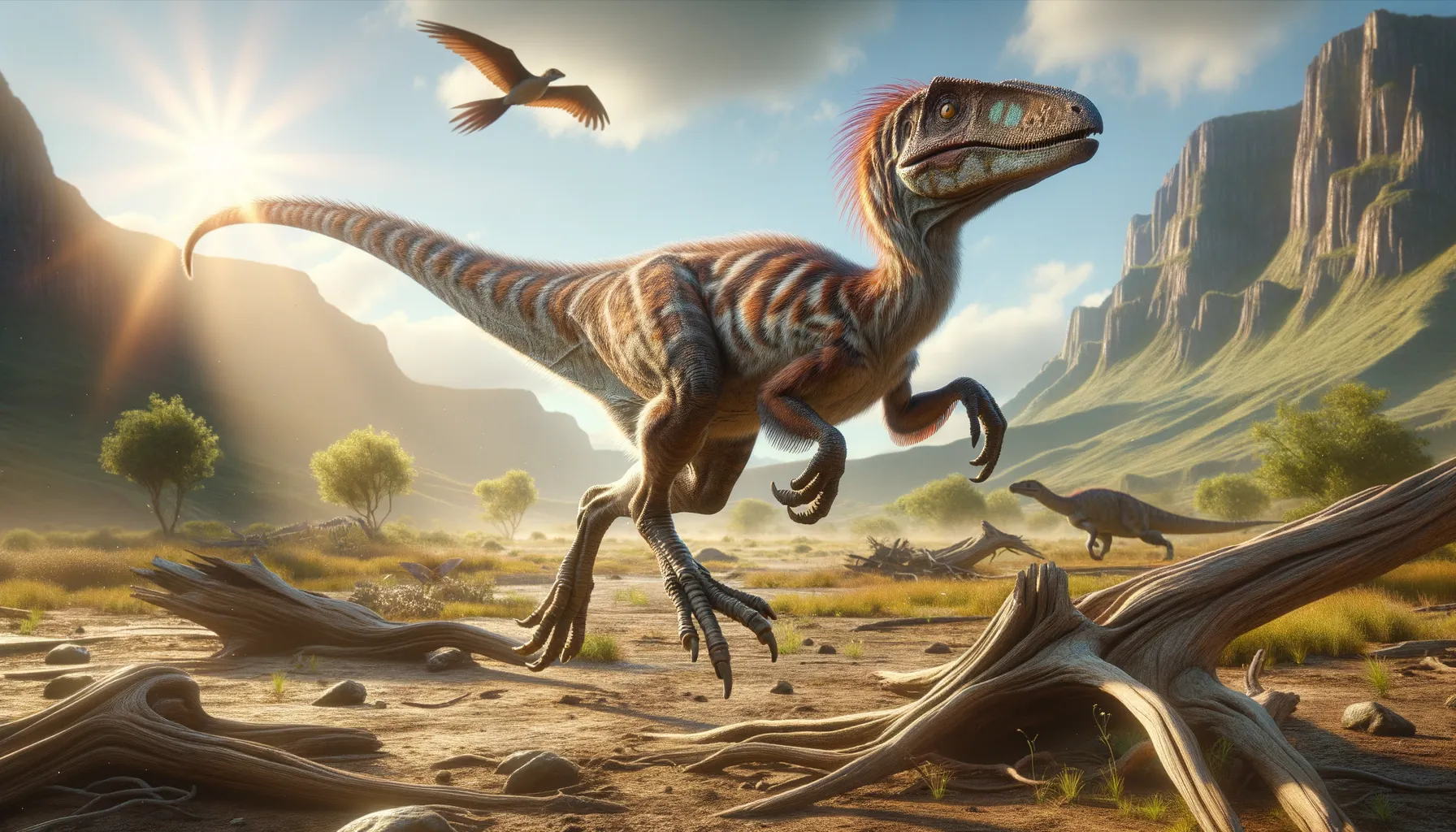
Airakoraptor
Swift predator of ancient times.
Period
Cretaceous
Length
Around 3 meters long.
Height
Roughly 1.5 meters at the hip.
Weight
Approximately 100 kilograms.
Airakoraptor was a nimble predator that lived during the Late Cretaceous period. Characterized by its agile body and swift movements, it roamed the landscapes of what is now Central Asia. Fossil evidence shows it was well-adapted to chasing down prey in its environment. It is also notable for its bird-like features, offering insights into the evolutionary link between dinosaurs and modern birds.
Diet
Airakoraptor was a carnivore, primarily feeding on small to medium-sized vertebrates. Its sharp teeth and claws were well-adapted for seizing and consuming prey quickly.
Hunting
This dinosaur likely used its speed and agility to ambush prey, striking quickly from the cover of dense vegetation. Its long legs suggest a capacity for fast bursts of speed, ideal for chasing down fleeing animals.
Environmental challenges
Airakoraptor faced various environmental challenges, including changing climates and competing predators. Weather patterns in its region could have shifted, affecting the availability of prey. Competition for resources was fierce, requiring constant adaptation to survive.
Speed
Fast, agile runner.
Lifespan
Estimated around 20 years.
First discovery
Unearthed in Mongolia in 1993.
Fun Facts
- Airakoraptor was a dinosaur from the Cretaceous period, known for its swift movements and agility.
- Fossils of Airakoraptor have been found in regions that are now part of Central Asia.
- This dinosaur was a close relative of the Velociraptor, sharing similar hunting traits and features.
- Researchers believe Airakoraptor had a keen sense of smell, which helped it track down prey.
- Unlike some larger dinosaurs, Airakoraptor was relatively small, making it a nimble and fast predator.
- Feathers were likely present on Airakoraptor, similar to many other raptor-like dinosaurs, providing excellent balance and agility.
- Airakoraptor, like its famous cousin Velociraptor, used its sharp claws for hunting and defense.
Growth and Development
Airakoraptor matured relatively quickly, with rapid growth during its juvenile stages. This fast development helped it to evade predators and begin competing for food early in life. Fossil evidence suggests a mixture of rapid growth and periods of slower, more steady development.
Habitat
It inhabited diverse environments ranging from forests to open plains, well-suited to its hunting and survival strategies. These varied ecosystems provided ample hiding spots for both hunting and evading larger predators. Seasonal changes in these habitats created fluctuating resources, influencing Airakoraptor's migratory patterns.
Interaction with other species
Airakoraptor interacted with a range of other dinosaur species, notably both as a predator and potential prey. Its presence in the ecosystem played a crucial role in maintaining balance, impacting the populations of smaller herbivores. Fossil evidence suggests it might have occasionally scavenged from larger carnivores' kills.
Natural lifespan
Airakoraptor lived for approximately 20 years in the wild.
Reproduction
Airakoraptor likely laid clutches of eggs, with nests built in relatively hidden areas to protect from predators. Parental care might have been minimal, similar to modern reptiles. Young Airakoraptors needed to quickly learn survival skills after hatching.
Social behaviour
While primarily a solitary hunter, it may have formed loose packs for hunting larger prey. Social interactions were likely limited to mating rituals and occasional cooperation during hunts. Communication involved simple vocalizations and body language.
Fossil locations
Airakoraptor fossils have been found predominantly in the Gobi Desert of Mongolia. These sites suggest it thrived in semi-arid environments. Fossil discoveries in this region have provided significant insights into late Cretaceous ecosystems.
